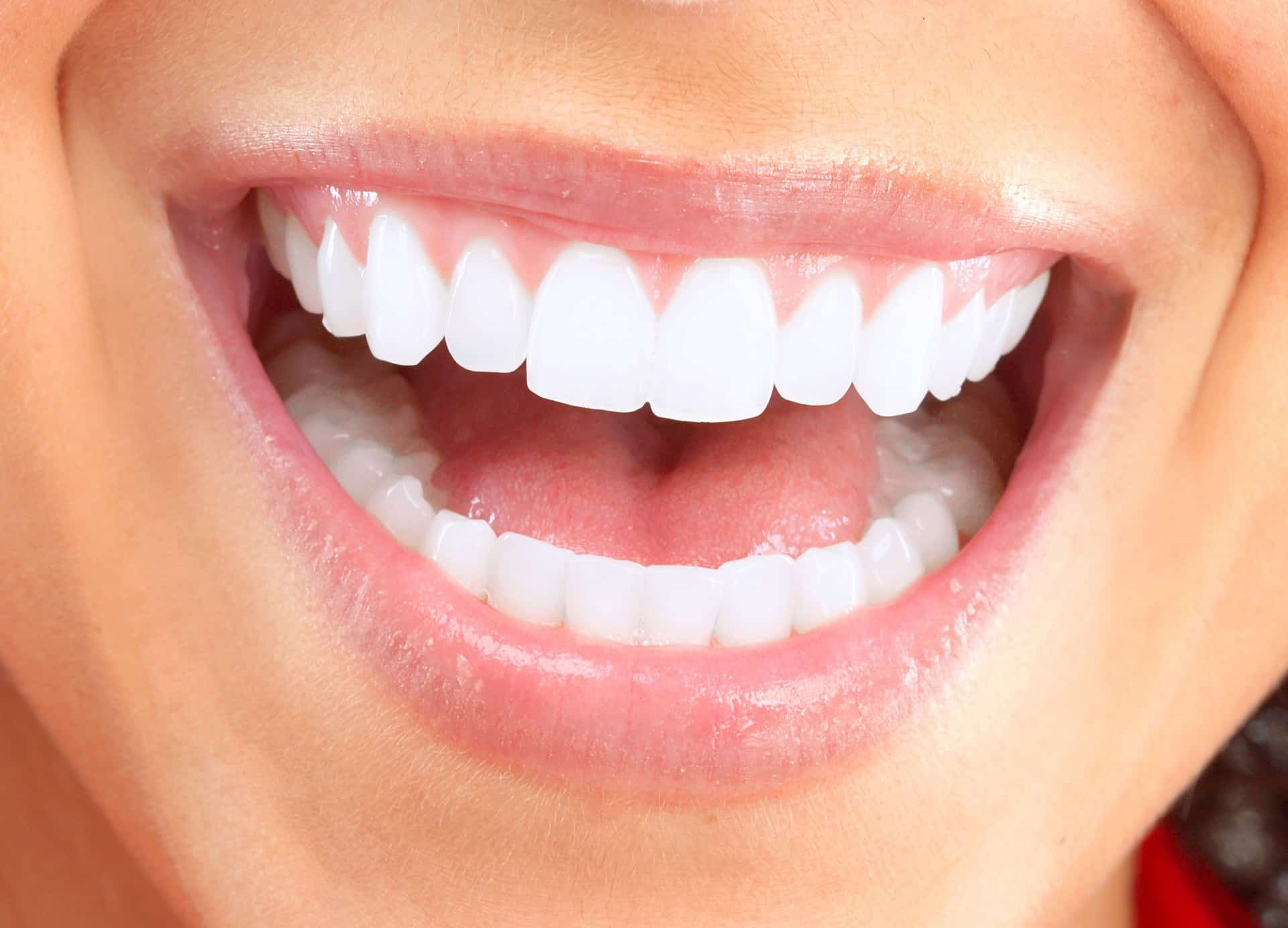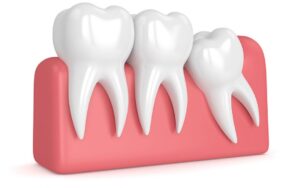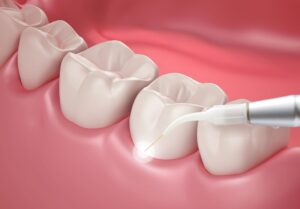Dental Bonding

Table of Contents
What exactly is dental bonding?
Dental bonding is a cosmetic dentistry procedure that involves the application of a tooth-colored resin material to the teeth. This resin is then hardened with a special light, which ultimately bonds the material to the tooth to restore or improve a person’s smile.
Dental bonding is a versatile treatment that can be used for a variety of purposes, including:
- Repairing decayed teeth: Dental bonding can be used to fill cavities with a tooth-colored resin, offering a more aesthetically pleasing alternative to traditional silver amalgam fillings.
- Repairing chipped or cracked teeth: Minor chips and cracks can be easily repaired with bonding, restoring the natural appearance of the tooth.
- Improving the appearance of discolored teeth: Teeth that are stained or discolored can be covered with bonding material, making them look whiter and more uniform in color.
- Closing gaps between teeth: Small gaps between teeth can be closed up using dental bonding, improving the overall appearance of the smile.
- Making teeth look longer: Bonding material can be applied to the tooth to make it appear longer or to reshape a misshapen tooth, contributing to a more balanced smile.
- Changing the shape of teeth: Teeth that are too small or have irregular shapes can be made to look more uniform through the application of bonding material.
- Protecting a portion of the tooth’s root: If a tooth’s root has been exposed due to gum recession, bonding can be used to protect the exposed area from sensitivity and decay.
Dental bonding is considered to be an easier and less expensive cosmetic dental procedure compared to veneers or crowns. It can usually be completed in a single visit to the dentist, does not require the removal of significant tooth enamel, and is reversible if no tooth enamel is removed for the bonding process.
Still, while dental bonding is durable, it may not be as strong as natural teeth and materials used in crowns or veneers, and it may need to be replaced in the future due to wear or discoloration.
Dental bonding procedure
The dental bonding procedure is a straightforward and minimally invasive cosmetic dentistry technique that can significantly improve the appearance of your teeth.
Here’s a step-by-step overview of what typically happens during a dental bonding session:
1. Consultation and Planning
The process begins with a consultation, where the dentist evaluates your teeth and discusses your cosmetic goals. This step may involve taking X-rays or making impressions of your teeth to ensure dental bonding is the appropriate treatment.
2. Shade Selection
The dentist selects a composite resin color that closely matches the natural color of your teeth. This ensures that the bonding material blends in seamlessly with your existing teeth for a natural-looking finish.
3. Tooth Preparation
Minimal preparation is needed for dental bonding. The surface of the tooth will be lightly etched to roughen it, which helps the bonding material adhere more effectively. In most cases, anesthesia is not required unless the bonding is being used to fill a decayed tooth.
4. Application of the Bonding Agent
After the tooth is prepared, the dentist applies a conditioning liquid to help the bonding material adhere to the tooth.
5. Applying the Resin
The dentist then applies the tooth-colored, putty-like resin to the tooth. This material is molded and smoothed until it’s in the desired shape.
6. Hardening
Once the resin is properly shaped, the dentist will use an ultraviolet light or laser to harden the material, bonding it securely to the tooth. This process only takes a few minutes.
7. Trimming and Shaping
After the bonding material has hardened, the dentist will trim and shape it further, if necessary, to match the natural contours of your tooth.
8. Polishing
The final step involves polishing the bonded material so that it matches the sheen of the rest of your tooth surface, ensuring that the bonding is not distinguishable from your natural teeth.
9. Follow-Up
While not always necessary, some dentists may schedule a follow-up visit to check on the bonding and make any needed adjustments.
Duration
The entire process can take anywhere from 30 to 60 minutes per tooth, depending on the extent of the work needed.
Post-Procedure Care
After the procedure, it’s important to take care of the bonded teeth by avoiding habits that can damage the resin, such as biting on hard objects, chewing ice, or using your teeth to open packaging.
Dental bonding cost
Dental bonding typically costs between $100 and $600 per tooth. The exact cost can vary depending on several factors, such as the complexity of the procedure, the dentist’s experience, and your geographic location. Read more: Dental bonding cost.
Top reasons to consider dental bonding
Dental bonding is a popular choice for many patients looking to improve their smile for several compelling reasons. Here are the top reasons to consider dental bonding:
1. Cost-Effectiveness
Dental bonding is one of the most affordable cosmetic dental procedures. Compared to more extensive cosmetic treatments like veneers or crowns, bonding offers a significant cost advantage, making it an accessible option for enhancing your smile without breaking the bank.
2. Minimally Invasive
The process of dental bonding requires minimal alteration to the original tooth structure. Unlike veneers or crowns, which require the tooth to be significantly reshaped, bonding can often be applied directly over your existing tooth, preserving more of your natural tooth structure.
3. Versatility
Dental bonding can address a wide range of dental issues. It’s an excellent option for repairing chipped or cracked teeth, closing gaps, changing the shape of teeth, covering discoloration, and even protecting exposed roots. This versatility makes it a go-to solution for both cosmetic and functional dental improvements.
4. Quick and Convenient
Most dental bonding procedures can be completed in just one visit to the dentist. There’s no need for impressions to be sent to a lab or for patients to return for multiple visits to complete the procedure. This convenience is a significant advantage for patients with busy schedules.
5. Immediate Results
The results of dental bonding are visible immediately after the procedure. Patients walk out of their dentist’s office with an improved smile in just one appointment, making it an excellent option for those looking for quick aesthetic improvements.
6. Improved Aesthetics
Dental bonding materials come in various shades that can be matched closely to the natural color of your teeth, ensuring a natural-looking result. This capability to customize the color makes bonding an excellent choice for improving the appearance of discolored or stained teeth.
7. Confidence Boost
Improving the appearance of your teeth can significantly boost your self-confidence and self-esteem. Dental bonding can help you feel more comfortable and confident in your smile, positively affecting your social interactions and overall quality of life.
8. Less Discomfort
Since dental bonding is minimally invasive and often requires no anesthesia (unless it’s being used to fill a cavity), patients experience little to no discomfort during the procedure. This aspect is particularly appealing for those who may be anxious about dental work.
9. Protective Benefits
Beyond aesthetics, dental bonding can offer protective benefits for your teeth, such as covering exposed roots that have become sensitive due to gum recession or reinforcing a weakened tooth that is prone to chipping or cracking.
10. Reversibility
Unlike some cosmetic dental procedures that permanently alter the structure of your teeth, dental bonding can be removed or altered without permanent changes to your teeth. This reversibility offers peace of mind for patients who are cautious about making permanent changes to their smile.
Considering these reasons, dental bonding stands out as a practical, efficient, and effective way to enhance your smile, making it a worthwhile consideration for anyone looking to improve their dental aesthetics with minimal downtime and expense.
Dental bonding vs. porcelain veneers
Dental bonding and porcelain veneers are both popular cosmetic dentistry procedures used to improve the appearance of your teeth, but they have distinct differences in terms of procedure, cost, durability, and the extent of the transformation they can provide.
Procedures
- Dental Bonding: Involves the application of a tooth-colored composite resin to the tooth, which is then shaped and hardened with a special light. It’s a relatively quick process that usually requires only one visit to the dentist and minimal tooth preparation.
- Porcelain Veneers: Thin shells of porcelain that are custom-made to fit over the front surface of your teeth. The process requires at least two visits: one for preparing the teeth and taking impressions, and another for applying the veneers. A small amount of tooth enamel must be removed to accommodate the veneer.
Cost
- Dental Bonding: Generally, dental bonding is less expensive than porcelain veneers. It’s considered a cost-effective option for cosmetic dental improvements.
- Porcelain Veneers: Veneers are more expensive due to the materials used and the process of customizing the veneers in a dental lab. The higher cost reflects the durability and aesthetic benefits they offer.
Durability
- Dental Bonding: While effective, the composite resin used in dental bonding is not as durable as porcelain. Bonding can last from 3 to 10 years, depending on care and usage.
- Porcelain Veneers: Veneers are known for their durability and can last 10 to 15 years or longer with proper care. Porcelain is resistant to stains and chipping, making it a long-lasting option.
Aesthetic Transformation
- Dental Bonding: Ideal for minor cosmetic changes, such as repairing chips, cracks, or small gaps between teeth. While it can significantly improve the appearance of a tooth, the transformation might not be as dramatic as with veneers.
- Porcelain Veneers: Offer a more significant and comprehensive cosmetic transformation. Veneers can change the color, shape, size, and length of teeth, providing a uniform, white, and aesthetically pleasing smile.
Advantages and Disadvantages
Dental Bonding:
- Advantages: Less expensive, minimally invasive, and requires no enamel removal for most cases.
- Disadvantages: Less durable than veneers, more prone to staining, and may not last as long.
Porcelain Veneers:
- Advantages: Highly durable, resistant to stains, and can dramatically transform your smile.
- Disadvantages: More expensive, the process is irreversible due to the removal of enamel, and requires more than one dental visit.
FAQ on Dental bonding
How long does a dental bonding last?
Dental bonding typically lasts between 3 to 10 years before needing to be touched up or replaced. This lifespan can vary based on the location of the bonding in the mouth, the amount of bonding material used, and an individual’s oral habits, such as biting nails, chewing on hard objects, or teeth grinding. Proper oral hygiene and regular dental check-ups can help extend the life of dental bonding.
Is dental bonding worth it?
Dental bonding is worth it for many people due to its affordability, minimal invasiveness, and versatility in addressing cosmetic dental issues like chipped, gapped, or discolored teeth. It offers a quick solution with immediate results and requires no removal of enamel, making it a reversible treatment. However, its durability is less than veneers or crowns, and it may stain over time.
Do they shave down teeth for bonding?
For dental bonding, minimal to no tooth enamel is removed, making it a conservative cosmetic procedure. Unlike veneers or crowns, where more significant tooth reshaping and enamel reduction are necessary, bonding typically involves just a light etching of the tooth surface. This etching helps the bonding material adhere better to the tooth. The process preserves most of the natural tooth structure, making it a less invasive option for improving the appearance of teeth.
Does tooth bonding break easily?
Tooth bonding does not break easily, but it is less durable than natural teeth and other dental restorations like veneers or crowns. The composite resin used in bonding is strong but can chip or crack if subjected to excessive force, such as biting on hard foods, chewing ice, or using teeth as tools. With proper care and avoiding habits that can stress the bonded areas, dental bonding can last several years before needing repair or replacement. Regular dental check-ups can help maintain its condition and longevity.
Fact Checked
Our dedicated team rigorously evaluates every article and guide to ensure the information is factual, up-to-date, and free of bias.
Updated Regularly
We update our articles and reviews regularly to ensure you have access to the latest data in the dental industry.
The content on Dental3DU’s blog is intended for educational purposes only. This information should not be relied upon as professional medical counsel. Be sure to always consult with your dentist about the dangers and benefits of any medication, treatment or procedure.







